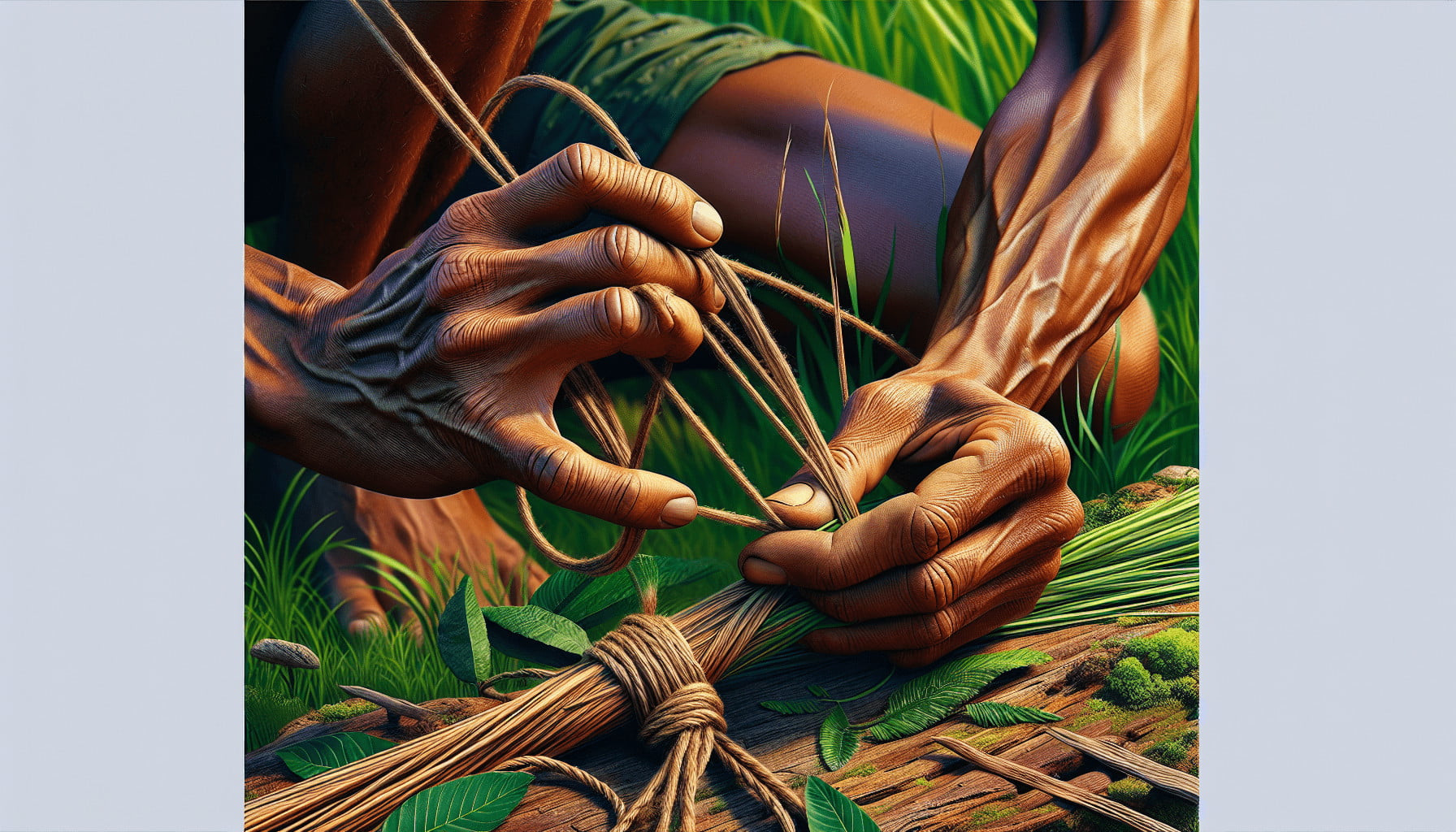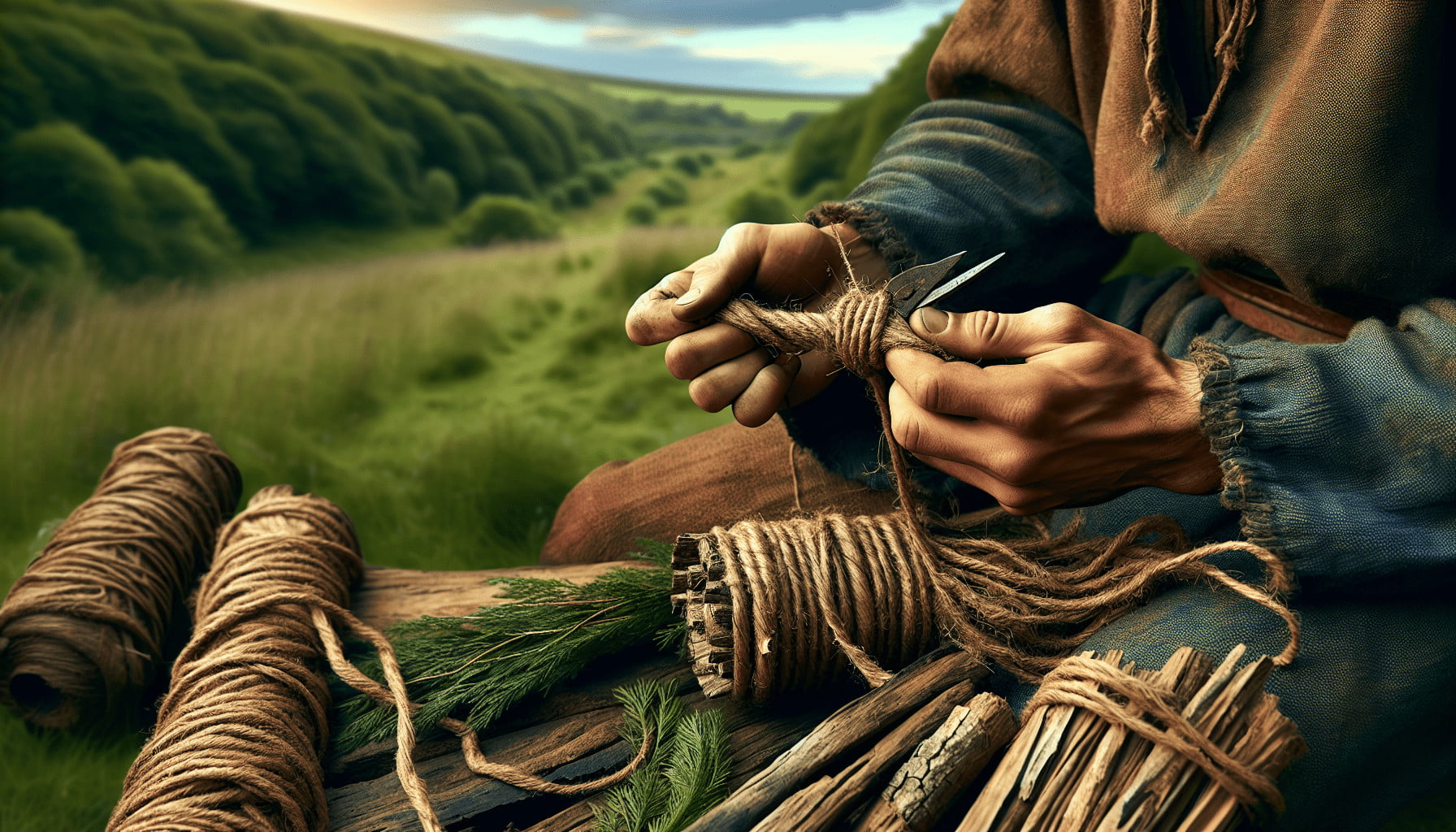Dive into the ancient craft of cordage making with “Best Techniques For Making Cordage From Natural Materials.” In this article, you’ll discover practical and accessible methods to create strong, reliable ropes using plants, grasses, and other natural fibers found in the wild. Whether you’re an outdoor enthusiast, a survivalist, or just curious about traditional skills, this guide will walk you through step-by-step techniques, from harvesting materials to twisting and braiding.
Whether you are a seasoned survivalist, an outdoor enthusiast, or someone simply interested in the historical techniques of our ancestors, making cordage is a skill that can come in surprisingly handy. This article will guide you through the best techniques for crafting strong, durable cordage using materials you can find in nature.

Understanding Cordage: What and Why?
Cordage refers to ropes and strings that are made by twisting or braiding fibers together to enhance their strength. Humans have been making cordage for thousands of years, primarily for tools, shelter, clothing, and even fishing. The need for strong, reliable cordage has not diminished over time, making this ancient skill remarkably relevant in today’s world. But why exactly should you learn to make your own?
Practical Uses
Cordage can serve multiple purposes, including:
- Securing Shelter: Reliable cordage is essential for tying down tarps, affixing tent poles, and bundling wood or other materials.
- Fishing: It can be used to create fishing lines and nets.
- Hunting and Trapping: For setting snares and traps.
- First Aid: Binding wounds or creating makeshift slings.
- Crafting Tools: Making bows, arrows, and other tools requires strong cordage.
Sustainability
Using natural materials means fewer synthetic products and a reduced environmental footprint. Plus, it’s empowering to know you can create something as essential as rope from the world around you.
Materials for Making Natural Cordage
Before diving into techniques, you’ll need to understand which natural materials are best suited for your cordage. The ideal material should be strong, flexible, and readily available in your area.
Plant-Based Materials
Plants are the most commonly used natural sources for cordage. Here are some of the best options:
- Hemp: Extremely strong and durable, hemp fibers are ideal for cordage.
- Flax: Known for its strength, flexibility, and smooth texture.
- Yucca: Offers long, tough fibers perfect for rope-making.
- Cedar Bark: Easy to strip and work with, providing strong inner fibers.
- Cattail Leaves: Great for thinner cords.
Animal-Based Materials
While less common, animal fibers can also be used to create cordage:
- Rawhide: Can be cut into strips and twisted to form a very strong cord.
- Sinew: Derived from animal tendons, sinew is known for its elasticity and strength.
Other Natural Materials
Here are some other materials you can consider:
- Vines: Some vines are strong enough to be used directly, while others can be twisted for added strength.
- Hair or Wool: Can be spun into yarn and used as cordage.
Techniques for Making Cordage
Now that you’ve gathered your materials, it’s time to learn the techniques. The two primary methods for creating natural cordage are twisting and braiding.
Twisting
This is the most straightforward technique and requires two or more strands of fiber.
- Preparation: Begin by gathering and cleaning your chosen fibers. Make sure to remove any dirt, leaves, or other debris.
- Splicing: If your fibers aren’t long enough, splice them together by overlapping the ends and twisting them until they hold.
- Twisting: Hold the fibers between your hands, twist them tightly in one direction (usually clockwise).
- Reverse Wrap: Once twisted, fold them in half. This will cause them to twist around each other in the opposite direction (counterclockwise), creating a strong, two-ply cord.
Braiding
Braiding is another effective method that tends to create more aesthetically pleasing and symmetrical cordage.
- Preparation: Gather and clean your fibers, just as you would for twisting.
- Division: Divide your fibers into three equal sections.
- Braiding: Start braiding those sections over and under each other, ensuring consistent tension to make a uniform rope.
Combining Techniques
For added strength, you can combine twisting and braiding. For instance, you might begin with a twisted cord and incorporate it into a braided one, enhancing both flexibility and durability.
Storing and Maintaining Your Cordage
Proper storage and maintenance of your cordage ensure its longevity and effectiveness. Here are some tips to keep in mind:
Drying
Always dry your cordage thoroughly before storing it. Damp conditions can lead to mold and rot, weakening the fibers.
Coiling
Store your cordage coiled to prevent tangles and ensure it is ready for immediate use.
Inspection
Regularly inspect your cordage for wear and tear. Replace any sections that appear frayed or weakened.

Practical Tips for Success
Here are a few practical tips to help you along the way:
- Experiment with Different Materials: Not all fibers are created equal. Experimenting will help you understand what works best for you.
- Practice Regularly: Like any skill, making cordage improves with practice. Regularly work on your techniques to gain proficiency.
- Tool Use: Simple tools like a knife for cutting fibers or a spindle for twisting can make the process easier.
Advantages and Limitations
It’s important to understand the pros and cons of using natural materials for cordage.
Advantages
- Sustainability: Eco-friendly and renewable.
- Self-Sufficiency: Empowers you to create essential tools and materials.
- Cost-Effective: Eliminates the need to purchase synthetic alternatives.
Limitations
- Time-Consuming: It can be labor-intensive and time-consuming.
- Variable Quality: The strength and usability can vary depending on the materials and your skill level.
- Weather Sensitivity: Natural fibers can be susceptible to weather conditions like moisture and decay.
Frequently Asked Questions
What is the strongest natural material for making cordage?
Hemp and sinew are often considered some of the strongest natural materials for cordage due to their durability and tensile strength.
Can I dye my natural cordage?
Yes, you can use natural dyes from plants like indigo, walnut hulls, and more to tint your cordage. It’s both decorative and can help you distinguish between different types.
How long does it take to make cordage?
The time it takes depends on the length and thickness of the cordage as well as your level of expertise. For a beginner, making a few feet of cordage might take a couple of hours.
Is natural cordage waterproof?
Most natural fibers are not inherently waterproof and can weaken when wet. However, you can treat them with natural oils or resins to increase water resistance.
Advanced Techniques and Tips
Once you’ve mastered the basic techniques, you may want to explore more advanced methods for making cordage.
Splicing for Length
When you need longer cords, knowing how to splice additional lengths seamlessly becomes crucial.
- Overlap the Ends: Lay one fiber’s end over another.
- Twist and Blend: Twist the overlapping sections until they blend seamlessly into your pre-existing cord.
Adding Strength
To add strength to your cordage, try these techniques:
- Doubling Up: Use double the amount of fibers than you think necessary.
- Steaming: After twisting or braiding, steam the cordage to tighten the fibers further.
Multi-Ply Cordage
For exceptional strength, periodically reverse-wrap additional fibers into your cordage to create a multi-ply rope.
Conclusion
Making cordage from natural materials is more than just a survival skill; it’s a doorway to sustainable living and a connection to our shared human heritage. From selecting the right materials to mastering the twisting and braiding techniques, this skill can serve numerous practical purposes. Plus, there’s just something incredibly rewarding about crafting something with your own hands.
So, why not give it a try? Head outdoors, gather some fibers, and start twisting or braiding. Before you know it, you’ll have a strong, durable piece of cordage ready to serve various needs. And who knows? This age-old skill might just become your new favorite hobby.
